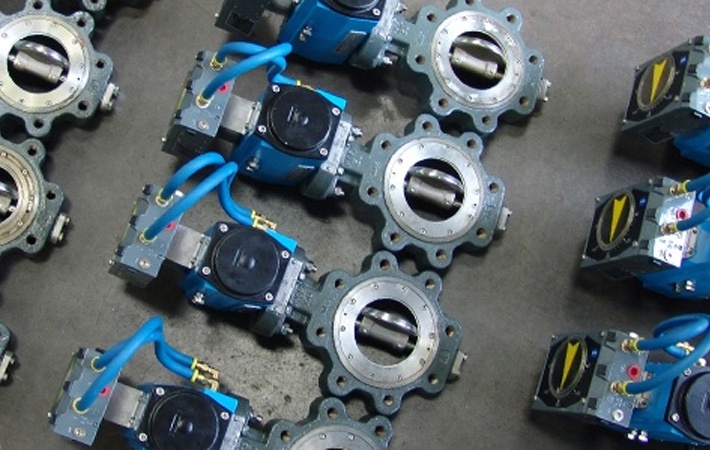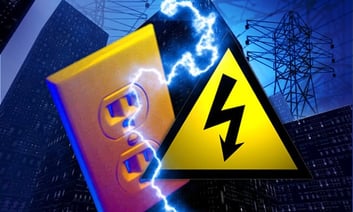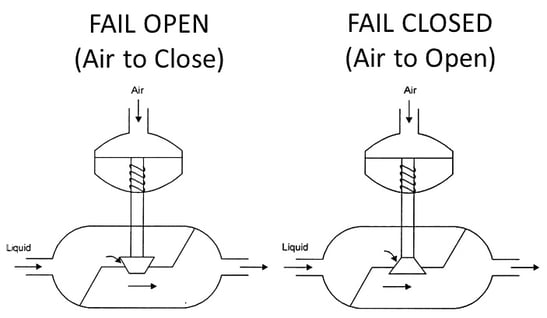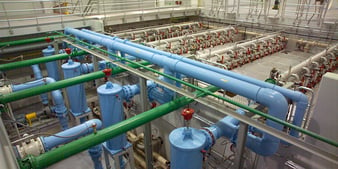
 It’s no secret that valves are essential to any control process. But what happens when your plant loses power? You’re left in the dark with no easy way to control your fluid process. That’s why it’s important to have a fail-safe status set up for your valves.
It’s no secret that valves are essential to any control process. But what happens when your plant loses power? You’re left in the dark with no easy way to control your fluid process. That’s why it’s important to have a fail-safe status set up for your valves.
A fail safety status is how the valve should operate when there is a loss of power or signal. The valve’s fail position is a safety precaution that protects your process in emergency situations. There are a few different fail scenarios; each having its own consequences and safety effects.
It is important to remember that valves are generally pneumatic, meaning that their function is based off of air pressure. Air has to be added in order to open or close the valve, depending on how it is set up. The air pressure acts on pistons, diaphragms, or springs inside of an actuator, creating force to move the valve stem. This allows for pneumatic actuators to be spring-closed or spring-opened, with the air pressure overpowering the spring to provide movement.
If you lose power or air pressure, how do you want your valve to react? Your decision is dictated solely by your process. Every process is unique, so you need to analyze your process and consider the consequences of what could happen downstream. Let’s go over the common fail positions.
Here's an interesting case study on how a wire manufacturing facility created a safety net for a custom water system by choosing a smart fail-safe position for a critical valve.
Fail open means a valve would open at a loss of signal or power. These types of valves require air pressure to stay closed. Once the required air pressure is gone, the valve will naturally open. Under a power outage, the source of the air pressure would be lost and the valve would “fail” open.
Fail closed means the valve will close when signal is interrupted or lost. This is the opposite of the scenario above. Since air pressure is needed to keep the valve open, it would automatically close when power is lost because there would no longer be a functioning air source.

This scenario is a little different because it only applies to a ball valve or control valve that doesn’t react to loss of power. This would be useful when the process can’t be shut down or where it is unnecessary to halt the process.
 Let’s go over some hypothetical situations. Imagine that you have a valve controlling the flow rate of a treated wastewater stream that is being released into a nearby river. Would you want this valve to fail-open or fail-close?
Let’s go over some hypothetical situations. Imagine that you have a valve controlling the flow rate of a treated wastewater stream that is being released into a nearby river. Would you want this valve to fail-open or fail-close?
You would definitely want this valve to fail closed. The fluid would no longer be receiving proper treatment, potentially allowing toxic fluid to be released. If the valve closed during the loss of power, it would prevent untreated fluid from being released. It would also store the fluid to be treated after the power outage issue has been remediated.
Now imagine that you have a valve controlling the flow of cold water entering a heat exchanger. Would you want this valve to fail-open or fail-close?
You would want it to fail open so the remaining warm process fluid could be cooled by the cold water. This would prevent the process from overheating and damaging critical components.
Feel free to contact us with any questions. We’d be happy to make sure you get valves that will operate safely when power is interrupted or lost!
These Stories on Valves
Headquarters and Service Center
Located outside Green Bay, WI
707 Ford Street
Kimberly, WI 54136
920-733-4425
OptiFlow Design and Build Center
1002 Truman Street
Kimberly, WI 54136
920-733-4425
Burnsville Service Center
12265 Nicollet Avenue
Burnsville, MN 55337
952-444-1949
Grand Rapids Service Center
26489 Industrial Blvd
Cohasset, MN 55721
952-444-1949
© Copyright 2024. Crane Engineering. All Rights Reserved. Privacy Policy.